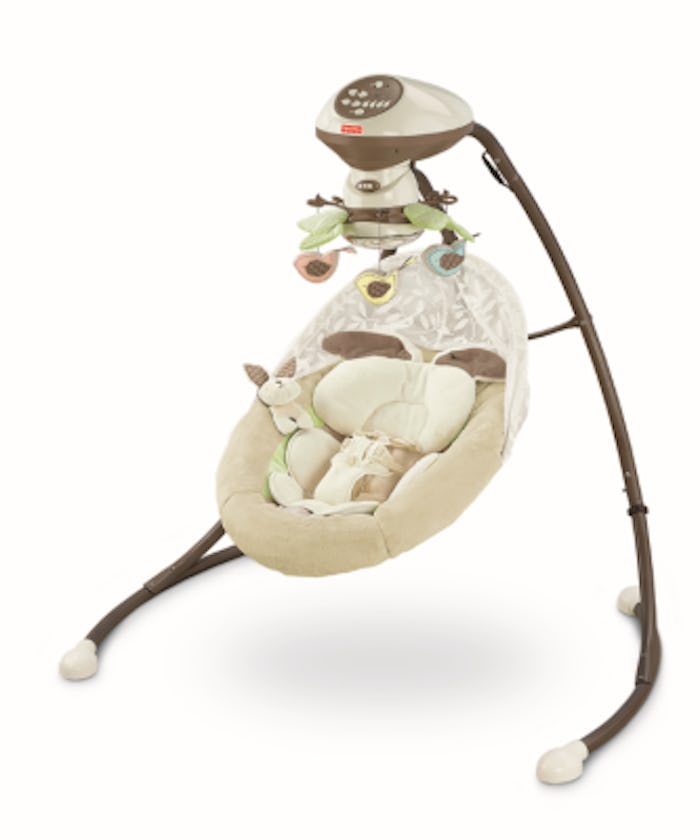Recalls

Fisher-Price Recalls 2 Million Snuga Swings Due To Suffocation Risk
There have been five known deaths associated with the product.
On Oct. 10, Fisher-Price and the U.S. Consumer Product Safety Commission (CPSC) announced the recall of more than 2.1 million Snuga Infant Swings. According to the CPSC’s recall alert, five infants have died while using the product between 2012 and 2022. There is always a possibility that more deaths have occurred and gone unreported. The infants were all 1 to 3 months old, and the swings were being used for sleep when the incidents occurred. In all five cases, the babies weren’t restrained using the product’s safety belts, and extra bedding had been added to the swing.
This swing “should never be used for sleep and bedding materials should never be added to it,” says the CPSC’s recall announcement. “If the product is used for sleep or bedding material is added, the headrest and body support insert on the seat pad can increase the risk of suffocation.” The CPSC, along with the American Academy of Pediatrics, say that you should never use any inclined products — including swings, gliders, soothers, and rockers — for infant sleep. You should also not leave babies in them unsupervised. Always use the product’s included restraints, and do not add extra bedding or blankets.
The Snuga Swing launched in 2010, and has since sold roughly 2.1 million units in the United States, 99,000 in Canada, and 500 in Mexico. There are 21 different models of the swing with various fabric patterns and toys attached, but all have the same structural design.
What to do if you own a Fisher-Price Snuga Swing
If you own one of these swings, read through the CPSC’s details on this recall. Compare the SKU number on your swing to their list to confirm whether your swing is among those being recalled. (The model number and name are printed on the underside of the swing motor housing.) If your swing is part of the recall, the CPSC urges parents to immediately remove both the headrest by cutting the tether, and then take out the body support insert from the seat pad before continuing to use the swing for awake-time activities. Do not add blankets, stuffies, or other soft items to the swing, even once these parts have been removed.
Fisher-Price will provide a $25 refund to consumers who remove and destroy the headrest and body support insert, the CPSC says. Visit Mattel’s customer support portal for this recall and fill in your information to receive your refund. You will need to submit photos of your swing with the destroyed headrest and body support insert, so don’t throw them out until you’ve submitted your refund request.
The Snuga Swing originally sold for $160 each, and product safety advocacy groups say the $25 incentive is simply not enough for parents to participate in the recall. “Consumer Federation of America and Kids In Danger say the recall is insufficient,” says a press release from Kids In Danger. “The minimal refund offered fails to emphasize the urgency of a recalled product associated with five infant deaths. In his statement on the recall, CPSC Commissioner Richard Trumka detailed his concerns with the recall.”
If you choose to get rid of the swing, ideally you would throw it away by disassembling it and destroying the fabric of the seat. The secondhand resale of recalled products — like the Fisher-Price Rock ‘N Play — has been shown to cause infant deaths long after the product has been recalled. It is important that you take recalls seriously to avoid your swing falling into the hands of other parents who aren’t aware of its dangers. CPSC Chair Alexander Hoehn-Saric and three commissioners have sent letters regarding the Fisher-Price Snuga Infant Swing recall to Goodwill Industries, Meta Platforms, Craigslist, eBay, Mercari, and Nextdoor to try and prevent the resale of the swing going forward.